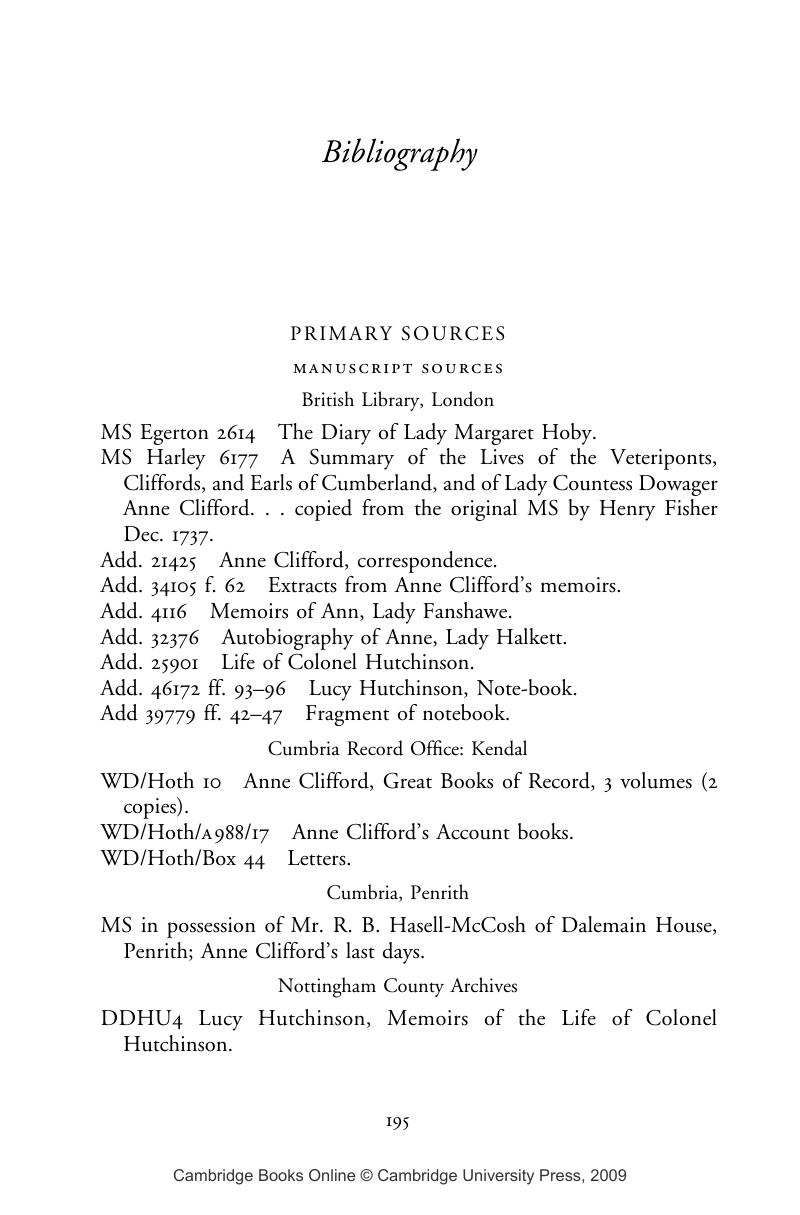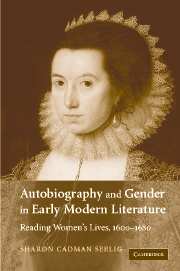Book contents
- Frontmatter
- Contents
- Preface
- Introduction: mapping the territory
- 1 Margaret Hoby: the stewardship of time
- 2 The construction of a life: the diaries of Anne Clifford
- 3 Pygmalion's image: the lives of Lucy Hutchinson
- 4 Ann Fanshawe: private historian
- 5 Romance and respectability: the autobiography of Anne Halkett
- 6 Margaret Cavendish: shy person to Blazing Empress
- Conclusion: “The Life of Me”
- Notes
- Bibliography
- Index
- References
Bibliography
Published online by Cambridge University Press: 22 September 2009
- Frontmatter
- Contents
- Preface
- Introduction: mapping the territory
- 1 Margaret Hoby: the stewardship of time
- 2 The construction of a life: the diaries of Anne Clifford
- 3 Pygmalion's image: the lives of Lucy Hutchinson
- 4 Ann Fanshawe: private historian
- 5 Romance and respectability: the autobiography of Anne Halkett
- 6 Margaret Cavendish: shy person to Blazing Empress
- Conclusion: “The Life of Me”
- Notes
- Bibliography
- Index
- References
Summary

- Type
- Chapter
- Information
- Autobiography and Gender in Early Modern LiteratureReading Women's Lives, 1600–1680, pp. 195 - 210Publisher: Cambridge University PressPrint publication year: 2006



